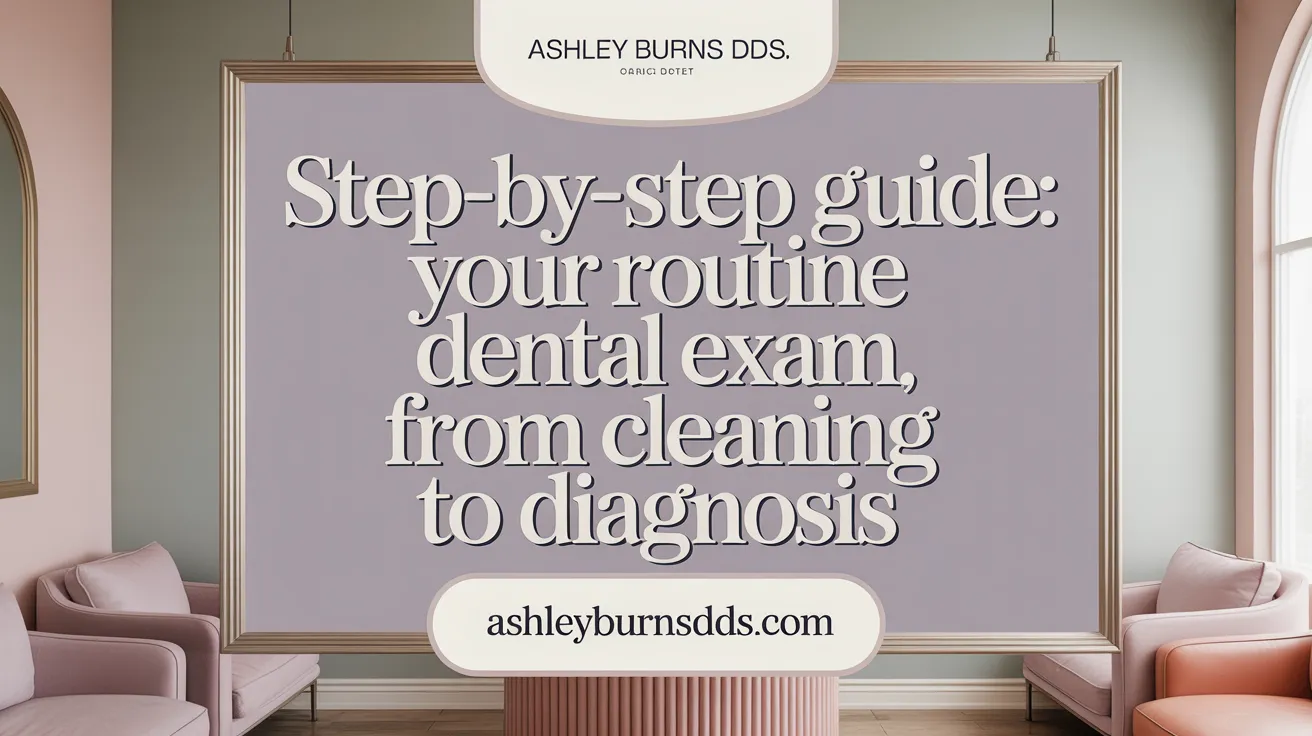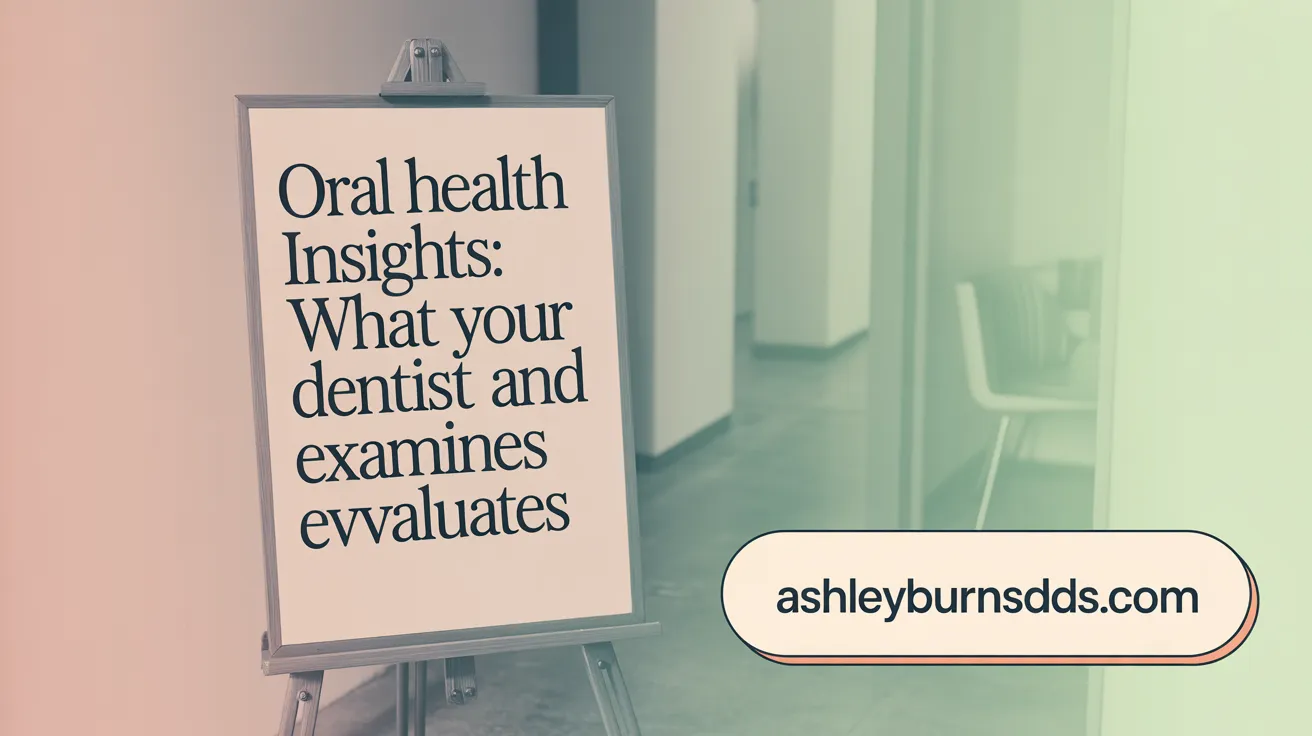Understanding the Essentials of a Dental Check-Up
Routine dental exams are a cornerstone of maintaining healthy teeth and gums. These visits not only involve cleaning but also comprehensive examinations that help detect problems early, preventing pain and costly treatments. This article outlines what happens during a dental exam, the importance of regular check-ups, and how patients can prepare to get the most out of their visits.
The Steps of a Routine Dental Exam: From Cleaning to Diagnosis

What happens during a routine dental exam?
A typical dental exam begins with the patient check-in, where the staff may ask for medical and dental history details to understand any existing conditions or concerns. This helps tailor the exam process effectively.
Next, a dental hygienist or assistant performs a professional cleaning. They start by scaling the teeth to remove plaque—a sticky bacteria film—and tartar, which is hardened plaque that cannot be brushed away. Using small metal tools, they carefully scrape these deposits from above and below the gum line. Afterward, the teeth are polished to remove surface stains and smoothen tooth enamel, providing a clean, shiny finish. Sometimes, fluoride or sealants may be applied to help protect against future decay.
X-ray images are often taken during the exam if needed. Patients bite down on a plastic device while the X-ray scanner captures detailed pictures of the teeth, roots, and bones. These images reveal unseen problems like cavities between teeth, impacted wisdom teeth, or early bone loss, which might not be visible during a visual check.
Following the cleaning, the dentist conducts a thorough physical and visual examination of the mouth. This involves inspecting the teeth for decay or damage, examining the gums for signs of disease such as swelling or bleeding, and checking the soft tissues of the tongue, cheeks, palate, and throat for abnormalities. The dentist may also assess the bite, jaw joint (TMJ), and overall oral health.
Special attention is paid to the jaw alignment and any signs of issues like tooth grinding or jaw pain. During this process, the dentist may gently probe the periodontal pockets around the teeth to measure gum health.
Once the examination and any necessary X-rays are complete, the dentist discusses the findings with the patient. This includes personalized recommendations on improving daily oral hygiene habits, such as brushing and flossing techniques, diet, and avoiding harmful habits. If problems like cavities or gum disease are detected, the dentist explains possible treatment options and may refer the patient to a specialist if required.
Overall, these steps aim to maintain oral health, detect problems early, and prevent more serious dental or health issues in the future.
Key Procedures Involved in a Dental Check-Up
 A dental check-up involves several important procedures to help maintain oral health and identify potential problems early. It typically starts with the patient filling out a questionnaire about their oral health history, providing valuable information for personalized care.
A dental check-up involves several important procedures to help maintain oral health and identify potential problems early. It typically starts with the patient filling out a questionnaire about their oral health history, providing valuable information for personalized care.
The next step is a professional cleaning performed by a hygienist. This includes scaling the teeth to remove plaque— a sticky film of bacteria—and tartar, which is hardened plaque that cannot be removed by regular brushing. The hygienist then polishes the teeth to remove surface stains and may apply fluoride or sealants to strengthen the enamel and protect against decay.
Following the cleaning, the dentist performs a visual and physical examination of the teeth, gums, and soft tissues. They look for signs of cavities, gum disease, and oral cancer, checking for abnormalities in the mouth, throat, and even the neck. The use of small instruments and mirrors helps in inspecting hard-to-see areas.
X-ray imaging plays a crucial role in a thorough dental check-up. X-rays offer detailed images of the teeth and jawbone, allowing detection of issues like cavities between teeth, impacted teeth, or bone loss that are not visible to the eye. The radiographs are taken with precautions such as lead aprons to minimize radiation exposure.
During the exam, the dentist also discusses oral health habits, including diet, smoking, and dental care routines. They evaluate bite alignment and examine the jaw joint, providing a comprehensive overview of oral health. Based on the findings, appropriate treatment options or further examinations may be recommended.
Regular dental check-ups are essential, typically scheduled once or twice a year, to ensure early detection of potential issues and maintain overall health. Following these procedures helps prevent more severe dental problems, making routine visits a cornerstone of good oral hygiene.
What Oral Areas and Conditions Are Evaluated?

What areas and oral health aspects are checked during a dental examination?
During a dental check-up, several key areas of the mouth are thoroughly examined to ensure good oral health. The dentist carefully inspects the teeth for signs of decay, cavities, and discoloration, as well as damage or abnormal wear. They look for plaque and tartar buildup that might cause gum disease or dental problems.
Soft tissues inside the mouth are also examined, including the gums, tongue, cheeks, roof of the mouth, and throat. The dentist checks for inflammation, sores, developmental issues, or abnormalities that might indicate infection or other health conditions.
In addition, the dentist assesses the alignment of the bite and examines the jaw joint, known as the temporomandibular joint (TMJ), to detect any issues with jaw movement or positioning.
A crucial part of the examination involves screening for oral cancer by inspecting the soft tissues, lips, cheeks, and palate for unusual growths, discoloration, or lesions.
The dentist may also measure gum health using periodontal probes, which help detect early signs of gum disease by measuring the depth of spaces between the teeth and gums.
Overall, this comprehensive examination helps identify potential oral health problems early, evaluate the need for treatments, and determine if any further diagnostic tests or referrals are necessary.
Preparing for Your Dental Visit and What to Expect

How should patients prepare for a dental visit and what can they expect?
Proper preparation helps ensure a smooth and effective dental exam. Patients should maintain good oral hygiene before the appointment—brushing, flossing, and possibly using mouthwash—to make their teeth look and feel clean.
It's advisable to avoid certain foods such as sugary, sticky, or artificially colored items prior to visiting the dentist. If you are scheduled for any oral surgery, eating a protein-rich meal beforehand is recommended, though you should avoid food for at least five hours if undergoing anesthesia.
Arriving about 10 to 15 minutes early helps with check-in procedures. Be sure to bring relevant documents, including your medical and dental history, insurance card, and any questions or concerns you might have.
For your comfort, wear loose, comfortable clothing that is easy to remove if necessary. Avoid wearing makeup, lipstick, or lip gloss, as these can interfere with the exam or X-rays.
During the visit, the dental team will perform a comprehensive oral exam, which includes checking your teeth, gums, and mouth for signs of decay, gum disease, or other issues. You might also undergo X-rays to view beneath the surface.
Professional cleaning will be done next, involving removing plaque and tartar, polishing your teeth, and sometimes applying fluoride treatments. Finally, the dentist or hygienist will discuss your oral health status, answer questions, and recommend further treatments or lifestyle changes to help maintain or improve your dental health.
By preparing properly and understanding what to expect, you can help ensure your dental visit is efficient, effective, and as comfortable as possible.
The Importance of Regular Dental Exams for Long-Term Oral Health

Why are regular dental check-ups significant for oral health?
Regular dental check-ups play a vital role in preserving long-term oral health. They allow dentists to catch early signs of common problems such as cavities, gum disease, and even oral cancer. Detecting these issues early can lead to simpler, less invasive treatments and prevent more serious health complications.
During a typical exam, a dental hygienist performs a professional cleaning that effectively removes plaque—a sticky film of bacteria—and tartar, which can harden and cause inflammation and decay if left untreated. While daily brushing and flossing are helpful, only professional cleaning can eliminate tartar buildup.
In addition to cleaning, the dentist conducts a thorough examination of the teeth, gums, and mouth, checking for abnormalities in bite, jaw alignment, or soft tissues. X-rays may be taken if needed, providing detailed images of areas not visible to the naked eye. This comprehensive approach ensures issues are identified early, often before symptoms become noticeable.
Dentists also offer personalized guidance on improving oral hygiene habits and lifestyle factors like diet, smoking, and alcohol use. These preventive measures, combined with routine visits, contribute significantly to overall health.
By maintaining regular dental exams—recommended at least twice a year—patients can avoid costly treatments later, enjoy healthier teeth and gums, and reduce risks associated with poor oral health such as heart disease and diabetes. Ultimately, consistent dental care is an investment in a healthier smile and better overall well-being.
Maintaining a Healthy Smile Through Routine Dental Exams
Routine dental exams are more than just a cleaning session; they are a crucial preventive measure that safeguards oral and overall health. Understanding what happens during these visits can help alleviate anxiety and promote proactive care. By adhering to recommended check-up schedules and oral hygiene practices, patients empower themselves with healthier smiles and peace of mind, reducing the risk of serious dental problems and enhancing quality of life.
